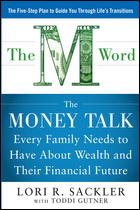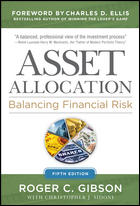(jb note: the article below is from my friend Roger Wohlner, who blogs at The Chicago Financial Planner.)

Many of the calls that I receive are from folks in their 50s or 60s who are either within sight of retirement or already retired. Many of these callers are pretty well-prepared for retirement and are seeking my help to fine-tune their situation and/or to help them through this next phase of life. This type of financial readiness doesn’t just happen it takes planning and preparation. Here are 5 essential financial planning steps for those of you in your 30s and 40s to help you reach your retirement goals and more importantly to help you achieve financial independence.
Get started
If for whatever reason you haven’t done much of anything to ensure your financial future it’s time to get going. Today is the best day to get started, tomorrow is the second best day, and so on. If you are in your 30s or 40s and haven’t begun to save for your retirement, if you have a family and don’t have a basic will or any life insurance, if you have debt or spending issues it’s time to get started on a path to secure your financial future.
Protect your family
I can’t tell you how many phone calls I’ve received from a 30 or 40 something professional (always a male) with young kids and a stay at home spouse. Typically the caller is all excited about investing or perhaps about buying income property. Both are great ideas. However when I ask whether he has any life insurance in place or even a basic will naming a guardian for his young children the answer is something like “… we’ve talked about that…” My response is to implore him to stop talking about it and get it done. I generally follow-up the phone call with a list of estate planning attorneys for them to consider.
My point is this, if you are in your 30s or 40s and have a family you need to ensure their financial security. Term life insurance is very cheap in this age range assuming that you are in good health. Until you’ve accumulated sufficient assets to provide for your family in the event of your death, life insurance is a great way to build an estate quickly.
It is vital that parents of minor children at least have a will in place that names a legal guardian for their children in the event of their death.
While we are on this subject make sure that all beneficiary designations on retirement accounts, annuities, and insurance policies are up to date and specify the correct beneficiary. There is no better way to say “I love you” to a spouse than to have you life insurance go to an ex-spouse or somebody else because you forgot to update the policy’s beneficiary designation.
Even if you are single at the very least you will want to give some thought as to where your money and assets would go if you were to die and take the appropriate actions to ensure this would happen.
Save for retirement
There is still time to accumulate assets for retirement. Time in fact is one of your greatest assets here. Contribute to your 401(k) or similar retirement plan. Contribute to an IRA.
In many cases you may be starting a family or looking to fund college during these years. While there may be conflicting demands for your money, save as much as you can for retirement. As you get to your 50s, 60s, and beyond you’ll be glad you did.
If you are single this is all the more reason to ramp up your retirement savings, assuming you never marry it’s all on you to save for a comfortable retirement.
Financial planning is vital
Many folks get serious about financial planning in their 50s and 60s as they approach retirement. There’s nothing wrong with this. However having a plan in place in your 30s or 40s gives you a head start. Are you on track to beat the odds in the “retirement gamble?” Better yet what will it take to help you achieve financial independence?
Make sure the basics are covered. Get your spending in check and pay down your debts. If you haven’t done so already, adopt the basic fiscal habits needed to live within your means.
If you work with a financial advisor become knowledgeable. Take an interest in your situation. This doesn’t mean that you need to be a financial expert, but a bit of knowledge combined with your own good common sense will help shield you from fraud or just plain bad advice. If your financial advisor recommends what seems to be costly, proprietary (to his/her employer) financial products trust your gut and look for advice elsewhere. My very biased view is that you should seek the help of a fee-only financial advisor. Check out NAPFA’s guide to help you in finding the right advisor for your needs.
Combine and consolidate
By this time you’ve likely worked for several employers. If you are like many people you haven’t paid as much attention to your old 401(k) accounts as you should have.
This is a good stage of your life to do something with these old retirement accounts. Combine them into a consolidated IRA account. Roll them into your current employer’s plan. Do something with these accounts, don’t ignore this valuable retirement asset.
Invest like a grown-up
There’s nothing wrong with allocating a portion of your investment assets to taking some”flyers” on a stock you like, or an ETF that invests in a hot sector of the market, play money in other words.
The vast majority of you investments should be allocated in a fashion that dovetails with your financial plan. Have an allocation plan, stick with it, rebalance your holdings periodically, and adjust your allocation as you age or if your situation warrants.
This investing plan should take into account all of your investments including IRAs, company retirement plans, taxable investments, and so on. If you are married this should include both of your accounts.
For most people mutual funds and ETFs generally make the most sense. There is nothing wrong with individual stocks, but they require a level of expertise and research that most investors don’t have.
The planning, saving, and investing that you do in your 30s and 40s will pay major dividends down the road, as you seek a comfortable retirement and financial independence. Don’t waste time, get started today. Don’t become part of the retirement savings crisis in the U.S.
Please contact me at 847-506-9827 for a free 30-minute consultation to discuss all of your investing and financial planning questions. Check out our Financial Planning and Investment Advice for Individuals page to learn more about our services.
Please check out our Resources page for some additional links that might be beneficial to you.
Photo credit: Flickr






































 Sterling Raskie, MSFS, CFP®, ChFC®
Sterling Raskie, MSFS, CFP®, ChFC® The latest in our Owner’s Manual series, A 401(k) Owner’s Manual, was published in January 2020 and is available on
The latest in our Owner’s Manual series, A 401(k) Owner’s Manual, was published in January 2020 and is available on  A Medicare Owner’s Manual, is updated with 2020 facts and figures. This manual is available on
A Medicare Owner’s Manual, is updated with 2020 facts and figures. This manual is available on  Social Security for the Suddenly Single can be found on Amazon at
Social Security for the Suddenly Single can be found on Amazon at  Sterling’s first book, Lose Weight Save Money, can be
Sterling’s first book, Lose Weight Save Money, can be  An IRA Owner’s Manual, 2nd Edition is available for purchase on Amazon. Click the link to choose the
An IRA Owner’s Manual, 2nd Edition is available for purchase on Amazon. Click the link to choose the  Jim’s book – A Social Security Owner’s Manual, is now available on Amazon. Click this link for the
Jim’s book – A Social Security Owner’s Manual, is now available on Amazon. Click this link for the  And if you’ve come here to learn about queuing waterfowl, I apologize for the confusion. You may want to discuss your question with Lester, my loyal watchduck and self-proclaimed “advisor’s advisor”.
And if you’ve come here to learn about queuing waterfowl, I apologize for the confusion. You may want to discuss your question with Lester, my loyal watchduck and self-proclaimed “advisor’s advisor”.